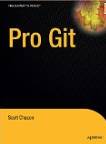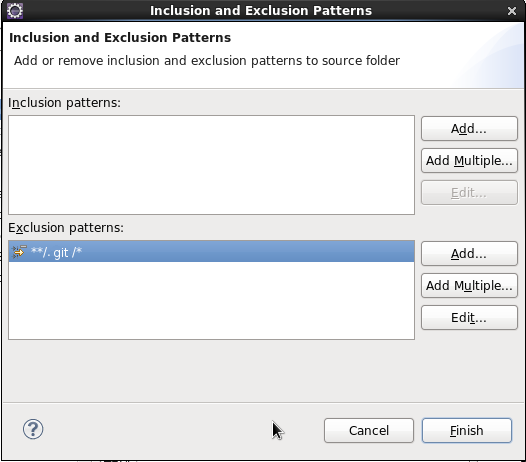Git command in linux
Шпаргалка по консольным командам Git
Git — система контроля версий (файлов). Что-то вроде возможности сохраняться в компьютерных играх (в Git эквивалент игрового сохранения — коммит). Важно: добавление файлов к «сохранению» двухступенчатое: сначала добавляем файл в индекс ( git add ), потом «сохраняем» ( git commit ).
Любой файл в директории существующего репозитория может находиться или не находиться под версионным контролем (отслеживаемые и неотслеживаемые).
Отслеживаемые файлы могут быть в 3-х состояниях: неизменённые, изменённые, проиндексированные (готовые к коммиту).
Ключ к пониманию
Ключ к пониманию концепции git — знание о «трех деревьях»:
- Рабочая директория — файловая система проекта (те файлы, с которыми вы работаете).
- Индекс — список отслеживаемых git-ом файлов и директорий, промежуточное хранилище изменений (редактирование, удаление отслеживаемых файлов).
- Директория .git/ — все данные контроля версий этого проекта (вся история разработки: коммиты, ветки, теги и пр.).
Коммит — «сохранение» (хранит набор изменений, сделанный в рабочей директории с момента предыдущего коммита). Коммит неизменен, его нельзя отредактировать.
У всех коммитов (кроме самого первого) есть один или более родительских коммитов, поскольку коммиты хранят изменения от предыдущих состояний.
Простейший цикл работ
- Редактирование, добавление, удаление файлов (собственно, работа).
- Индексация/добавление файлов в индекс (указание для git какие изменения нужно будет закоммитить).
- Коммит (фиксация изменений).
- Возврат к шагу 1 или отход ко сну.
- HEAD — указатель на текущий коммит или на текущую ветку (то есть, в любом случае, на коммит). Указывает на родителя коммита, который будет создан следующим.
- ORIG_HEAD — указатель на коммит, с которого вы только что переместили HEAD (командой git reset . , например).
- Ветка ( master , develop etc.) — указатель на коммит. При добавлении коммита, указатель ветки перемещается с родительского коммита на новый.
- Теги — простые указатели на коммиты. Не перемещаются.
Перед началом работы нужно выполнить некоторые настройки:
Если вы в Windows:
Указание неотслеживаемых файлов
Файлы и директории, которые не нужно включать в репозиторий, указываются в файле .gitignore . Обычно это устанавливаемые зависимости ( node_modules/ , bower_components/ ), готовая сборка build/ или dist/ и подобные, создаваемые при установке или запуске. Каждый файл или директория указываются с новой строки, возможно использование шаблонов.
Длинный вывод в консоли: Vim
Вызов некоторых консольных команд приводит к необходимости очень длинного вывода в консоль (пример: вывод истории всех изменений в файле командой git log -p fileName.txt ). При этом прямо в консоли запускается редактор Vim. Он работает в нескольких режимах, из которых Вас заинтересуют режим вставки (редактирование текста) и нормальный (командный) режим. Чтобы попасть из Vim обратно в консоль, нужно в командном режиме ввести :q . Переход в командный режим из любого другого: Esc .
Если нужно что-то написать, нажмите i — это переход в режим вставки текста. Если нужно сохранить изменения, перейдите в командный режим и наберите :w .
Источник
GIT Commands and Examples
GIT command summary cheat sheet, use, best practices, tips and examples. This tutorial covers version control with Git using the command line interface, GUI clients and examples which interface Git with GUI diff tools.
| rev e3b43d63 | rev ec1187f9 | rev 60fdba79 |
|---|---|---|
 |  |  |
Related YoLinux Tutorials:
Git is a software source code «Change Management» (CM) system for collaborative development. It maintains a history of file versions. Unlike typical client-server CM systems which «check-out» the latest or a particular version of the files, Git is a distributed CM system where the user has a local copy (a clone) of the entire repository which includes the entire history of all files. The user working with files in their local project work area, interacts with the local clone repository, adding, editing and deleting files and eventually committing their changes. The user can then share these changes to the local repository with a «push» or «pull» to other Git repositories including a server based central «origin» repository.
Git command summary cheat sheet:
| Command | Description | Man Page |
|---|---|---|
| git --help | List Git commands | git |
| git --help command | Help on given «command« | git help |
| git add path/filename git add file1 file2 file3 | Add a file or directory to Git CM control. This does not commit the files to the repository but merely adds files to «staging» status. Must also perform: git commit to enter changes in the repository. View staged files: git ls-files --stage Empty directories are not added. Git manages files only. —update: stage all tracked and modified files. Undo an add: git reset HEAD path/filename | git add |
| git blame filename | Show file line numbers annotated with author information. Also see git log | git blame |
| git branch -a | List all branches (remote and local) | git branch |
| git checkout parentPath/filename git checkout master git checkout e3b43d63 | Undo local changes. Revert changes. This directive is misleading as it implies a client-server action. Instead, it relies on the local repo and sets the working copy to the unchanged version, reverting changes. Checkout «master» will set the local work area to match the master branch. You can also specify the commit to which you want the local repo to view. Also see git reset | git checkout |
| git clean -df git clean -df git -n clean git -dn clean | Remove files not managed by Git. -df: All unchecked files and directories are removed. -n: Dry run. Command not executed. -d: directories Clean has nothing to do with an Ant target of «clean» and is in no way related. Also see git gc | git clean |
| git clone http://git.megacorp.com/git/repo/projectx.git git clone ssh://user@git.megacorp.com:/srv/git/repo/projectx.git | Copy/clone/create a local repository from the remote repository specified. [Potential Pitfall]: The following error often is a connectivity issue: fatal: http://git.megacorp.com/git/repo/projectx.git/info/refs not valid: is this a git repository? If a proxy error is keeping you from connecting. Fix: unset http_proxy | git clone |
| git commit git commit dir-path/filename git commit -m "Message goes here." filename | Check-in (commit) local staged "working" files into local repository. Files must be staged for commit using git add Files are recursively located and committed into the local git repository. Git commits are Atomic, i.e. all files are committed or none are committed, no incomplete check-in. | git commit |
| git config --global user.name "John Doe" git config --global user.email jdoe@megacorp.com git config --global --unset user.password | This configures Show your local GIT configuration for your local repo Clear cached password. Will be prompted on next push/pull. | git config |
| git diff git diff e3b43d63 60fdba79 directory/path | Show file diffs between the working tree and local repo. Show file diffs between two commits. | git diff |
| git gc | Cleanup unnecessary files and optimize/compress local repo. | git gc |
| git log git log --oneline git log directory/path/file git log --author="name" git log --graph --decorate --oneline | Show the Git log messages. --oneline: brief description --graph --decorate: display branching like gitk except for text terminals. Note that the letter "q" will quit pagination mode. | git log |
| git ls-files --stage git ls-files --cached git ls-files --modified git ls-files --others git ls-files --deleted git ls-files --unmerged git ls-files --killed . | List files staged. List cached files. List modified files. List other (un-tracked) files. List deleted files. List un-merged files. List killed files that need to be removed due to file/directory conflicts for checkout-index to succeed. | git ls-files |
| git ls-remote -h http://domain/git/repo/projectx.git HEAD | List files under Git control on remote Git server. | git ls-remote |
| git mergebranch-name git merge --abort | Merge a specified branch into your current branch you are in. If you are in the "master" branch, then "branch-name" will be merged into "master". --abort: After starting a merge, you might want to stop the merge and return everything to its pre-merge state. --stat: Show a diffstat after merge completion -m: Message to be included in the merge commit | git merge |
| git mvfile-old-namefile-new-name | Rename a file. Moves/renames file. | git mv |
| git mergetool | View file conflicts in a merge tool. Default is vimdiff Assign a GUI tool: KDiff3:
Meld:
Tools options include: p4merge, meld, kdiff3, tkdiff, gvimdiff, vimdiff, . | git mergetool |
| git pull origin master | Update your local repo and working files with changes posted on the git remote server origin: refers to repository from which you will receive updates master: refers to the master branch from which you will receive updates This command is the same as performing the following two commands: git fetch git merge | git pull |
| git push origin master | Update the remote repo from the staged (identified with «git add«) local working files origin: refers to repository from which you will receive updates master: refers to the master branch from which you will receive updates This command is the same as performing the following two commands: git fetch git merge | git pull |
| git remote -v | Show URL to origin server. | git remote |
| git reset HEAD^ path/filename git reset HEAD 1 path/filename | Remove from staging (local copy of files still modified) —hard: Don’t keep changes, remove modifications to files. HEAD^: latest commit notation for Linux and bash shell terminals. HEAD 1: latest commit notation for Microsoft CMD shell. Microsoft DOS shell does not support «^». Reset the repo to the last good commit specified and ignoring everything after e3b43d63: | git reset |
| git revert HEAD | Not a commit undo but overwrites the commit with a new commit to reverse changes. Usually better to use «git reset --hard HEAD^ path/filename» when you want to abort your changes to a file. If you are trying to get back to a previously committed state, just use git checkout e3b43d63 | git revert |
| git rm filename git rm -r directory/path | Delete file from local working index. Don’t use the UNIX command rm file-name. Must perform a «git commit» to update the repository. -n: dry run -r: recursive removal when given a directory name. | git rm |
| git status | Show tracked files which have been staged, committed, etc. | git status |
| git tag -a April_Sprint -m "Source used for April sprint demo" git tag -a April_Sprint -m "Source used for April sprint demo" e3b43d63 | Add a «tag» to the commit to identify it in human readable terms. You can then push using the following: git push origin master April_Sprint or git push origin master --tags -a: Generate an annotated tag object. -d: Delete existing tags with the given names. -f: Replace an existing tag with the given name. -m: Add a message. | git tag |
- HEAD: The latest revision in the repository.
- HEAD^: latest commit notation for Linux and bash shell terminals.
- HEAD
1: latest commit notation for Microsoft CMD shell. Microsoft DOS shell does not support «^».
Example Session:
(Assumes that the repository has already been created. For Git repository creation and Git server configuration, see the YoLinux Git server tutorial)
- Checkout: git clone ssh://user@git.megacorp.com:/srv/git/repo/projectx.git
copy origin repository and create a local repository. - Go to source code directory: cd Projectx/src/main/java/com/megacorp/projectx
- Edit files:
- vi file1.java
- vi file2.java
- Verify and test: ant
We are ready to check-in the files into the Git repository. - Flag files as staged: git add file1.java file2.java
- Show status including files staged: git status
- After many long hours of editing and work, get updates others have made and merge changes with local working files: git pull origin master
- Resolve merge conflicts if they exist: git mergetool
At this point, a commit will fail until the merge is resolved. - Merge options:
- Decide on changes you want: git mergetool
Uses merge tool you specify. Default: vimdiff - Choose your file changes: git checkout --ours file1.java
(—ours: your file in your local work area) - Choose their file changes: git checkout --theirs file1.java
(—theirs: branch you are merging into. The file from remote origin server) - Edit the file to remove conflicts: vim file1.java
(the file will have >>>>>>> and $$Revision$ This fills in the Git hash for the commit associated with this revision.
$Revision: 93c4a4a5b871f3183ea90f7df159cc3e363ec534 $$Source$ File name $File$ File name (same as $Source$) $Id$ A summary of the previous 3 keywords: $File, $Date and $Author. Example source file comment: Expanded comment:
The personal configuration file
/.gitconfig is where the filters are assigned. Add the following:
Place the .gitattributes file and .git_filters/ directory at the root of the CM directory tree:
Copy the filters to:
- projectx/.git_filters/rcs-keywords.smudge
- projectx/.git_filters/rcs-keywords.clean
Allow filters to be executed: chmod ugo+x projectx/.git_filters/rcs-keywords.smudge projectx/.git_filters/rcs-keywords.clean
Otherwise you will get the following error:The filters are checked-in to Git and thus need to have a Git execute attribute applied: git update-index --chmod=+x projectx/.git_filters/rcs-keywords.smudge projectx/.git_filters/rcs-keywords.clean
Note that this tag substitution occurs on a fresh «git clone» or on a «git pull» and modifies the files in your workspace but does not affect the files in the repository itself. The author of the RCS tag edits will not see the substitutions unit they perform a fresh «git clone» to generate a new local repository or when a «git pull» finds file modifications and performs an update.
Three types of file differences are covered in this section:
- Show file differences made since a pull or checkout was made. This shows the changes you have made. It is useful to perform this before a commit.
- Show file differences between two files versions stored in Git.
- Show differences / conflicts, choose and merge.
Note that the following conventions are used:
- LOCAL: file on your current local branch
- REMOTE: branch you are merging to (e.g. new_branch you are trying to pull. Their changes.)
- MERGED: the partially merged file with merge conflicts marked with chevrons:
- >>>7c10716976ee3e9d49f69d71ec6cc4bd43957ec8 : conflicted lines between this and «=====» are their changes in the repository which conflict.
You have the option of using a merge tool or just editing the file to reflect the changes you want. The chevrons and «=====» must be removed.
- BASE: the original common ancestor file from which LOCAL and REMOTE evolved. The file before the conflicted changes.
Git uses the command line Linux «diff» command. A GUI diff tool is far more intuitive and can be specified using the following commands:
- Configure git to use a GUI diff tool:
- git config --global diff.tool meld
- git config --global difftool.meld.cmd 'meld $LOCAL $REMOTE'
This adds the following entry to your
/.gitconfig
- GUI diff between file in working area and repo: git difftool filename.java
- View the differences for a file and two commits back: git difftool HEAD HEAD^^ filename.java
- View the differences for a file between two commits: git difftool a1a1c14299049c5e1cf60f8cc02f41bbf7d8b85f 93c4a4a5b871f3183ea90f7df159cc3e363ec534 filename.java
(Use «git log» to view the commit hashes) - View the differences for two files between two commits: git difftool a1a1c14299049c5e1cf60f8cc02f41bbf7d8b85f:file1.java 93c4a4a5b871f3183ea90f7df159cc3e363ec534:file2.java
- View all differences between two commits: git difftool a1a1c14299049c5e1cf60f8cc02f41bbf7d8b85f 93c4a4a5b871f3183ea90f7df159cc3e363ec534
Configure git to use a GUI merge tool. Note that most diff tools also support merges:
- git config --global merge.tool meld
- git config --global mergetool.meld.cmd 'meld $LOCAL $MERGED $REMOTE'
This adds the following entry to your
Merge conflicts occur when two developers check out common files and both edit the same line/lines. Edits to different lines merge automatically and cleanly. When changes are made to the same line and then one developer commits and pushes the code, the second developer must deal with the merge conflicts by selecting the line they want, «ours» or «theirs». GUI merge tools support the management of a merge by addressing the lines marked as a conflict using the text markers «>>>>«.
- tkdiff: [download]
- gtkdiff: Has diff3 and merge features. Written with GTK+. After gtkdiff-0.8.0, GNOME desktop required.
- diffUse: Diff/merge GUI tool. Good line matching features. Supports Unicode.
- kdiff3: Graphical directory and file diff, merge and edit. KDE3/Qt based. (Cross platform) MS/Windows download available. A very good directory and file diff and merge tool.
- Diff:
- git config --global diff.tool kdiff3
- git config --global difftool.kdiff3.cmd 'kdiff3 $LOCAL $REMOTE'
This adds the following entry to your
/.gitconfig
- Diff:
- Merge:
- git config --global merge.tool kdiff3
- git config --global mergetool.kdiff3.cmd 'kdiff3 $BASE $LOCAL $REMOTE -o $MERGED'
This adds the following entry to your/.gitconfig
- Decide on changes you want: git mergetool
- Kompare: Ships with (RHEL6/RHEL5/RHEL4/FC3+) KDE SDK. [manual]
Included in Red Hat RPM package «kdesdk» an Ubuntu package «kompare».
[Potential Pitfall] : RPM installation error: Solution: Install the dependency package «kdebindings». - mgdiff: Motif-based graphical file difference browser and merge. Comes with S.u.S.E. distro.
- Meld: Compare, edit and merge.
- Diff:
- git config --global diff.tool meld
- git config --global difftool.meld.cmd 'meld $LOCAL $REMOTE'
This adds the following entry to your/.gitconfig
- Merge:
- git config --global merge.tool meld
- git config --global mergetool.meld.cmd 'meld $BASE $LOCAL $REMOTE --output $MERGED'
This adds the following entry to your/.gitconfig
- Diff:
- xxdiff: Compare 2 or 3 files and merge. Also compares directories.
- gvim and gvimdiff
- Beyond Compare — commercial tool (cross platform)
Git comes with a GUI: git gui and a browser tool gitk
The latest version is available from github.com: gitk
Installation:
- Ubuntu: sudo apt-get install git-gui
- From source:
- wget https://github.com/gitster/git/blob/master/gitk-git/gitk
- chmod +x gitk
For other options see:
- CollabNet: GitEye: cross platform, push/pull, history, diffs, revert, stash, etc. Intuitive and customizable
- SmartGit: cross platform commercial product
- QGit: View revisions, diffs, files history, files annotation, archive tree, Commit changes visually cherry picking modified files.
- Axosoft: GitKraken: commercial product. Free for non-commercial use. Cross platform.
- Git-cola: Python git front-end. (cross platform)
- GNOME: Giggle: GTK+ application
- GNOME: gitg
Web Clients:
- GitWeb: comes with Git
- GitLab: Ruby, community edition
- Gogs: written in Go
- Gitea: a fork of Gogs
- RhodeCode: community edition and commercial product. User control, permissions, code reviews, and tool integration.
- Gitssh2: Symfony PHP framework. Connects to repositories via ssh
- Axosoft: GitKraken:
- GitList:
- Kallithea: community edition
Plug-ins:
- nautilus-git: GNOME Nautilus/Nemo file browser GIT plug-in.
- EGit Eclipse IDE plug-in
Note: A GIT client is built into many of today’s development IDEs such as NetBeans.
- ALWAYS compile and test before pushing source code to the origin server. Developers expect shared changes to compile.
- Always add commit comments. Nothing is more obnoxious that looking at an uninformative log or information history.
- Monstrous binary files like CD or DVD ISO images are better suited for storage on a file system rather than in Git. Git will not be able to show differences between version and will be slower than a raw filesystem.
- Don’t copy, rename and move directories and files with system shell commands. Use Git commands to «rm», «mv», and «add» files and then commit changes when done. Work within Git.
- Push changes as a single logical change-set for one purpose. Thus all code changes for a single bug fix or enhancement should be checked-in together. This allows one to better follow the history log of changes.
- Stage code at the directory level and all changed files, recursively in the directory and sub-directories will be checked in together.
git add -all - Stage files together by specifying them explicitly:
git add file.cpp file2.cpp .
- Stage code at the directory level and all changed files, recursively in the directory and sub-directories will be checked in together.
- Tie Bug tracking and Git CM together:
- Use comments when commiting files into Git. Add bug tracking numbers to the comments so Git will reference Trac bugs.
- If using Trac, add Trac comments so that links are generated to the Git repository by placing the Git revision hash in square braces (i.e. [e3b43d63]) in a Trac comment. In this way, Trac will have a direct URL link to Gitweb.
- If using Trac integrated with Git, refer to the Trac ticket in the Git commit comment using a «#» in front of the Trac ticket number (e.g. #65) This generates a hyperlink when the Git logs are viewed in Trac.
- Documentation and related artifacts checked-in to Git should not be under the source tree but parallel to it. This isolates the source tree so that email notification triggers sent to developers upon source changes will only go out on source changes or regression build and test systems like Jenkins or Cabie will only rebuild and test on source changes rather than on unrelated documentation changes.
Using Eclipse IDE with Git:
Block Eclipse from viewing the hidden «.Git/» directory so that Eclipse does not intrude or alter their contents:
- Select the toolbar options: «Project» + «Properties»
- Select the «Java Build Path» + select the «Source» tab
- Select the «Excluded» item and select «Edit»
- In the lower half under «Exclusion patterns:» select «Add. » and enter the pattern **/.git/*
 | Distributed Version Control with Git [Kindle Edition] Lars Vogel (Author) A practical introduction into the Git version control system. |  |
 | Version Control with GIT by Jon Loeliger and Matthew McCullough ISBN #1449316387, O’Reilly Press |  |
 | Pro Git Scott Chacon (Author) Visual explanations of the git concepts and methodology. Step-by-step ways to track, merge, and manage software projects, using Git. Источник |




